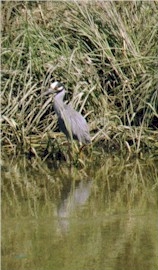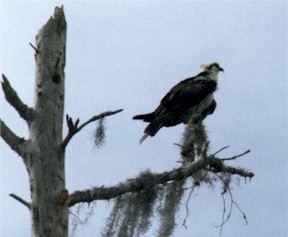Large Animals Need Riparian Zones
Riparian zones are utilized by wildlife as a sort of "natural highway". As roads and highways are important to humans, forested riverbanks are important to mammals and birds as they journey up and down the river during daily movements and seasonal migrations. These areas may be important corridors for more than just wildlife migration, however: as plant and animal habitats shrink or become fragmented, riparian zones may allow for the preservation of genetic variability by maintaining connections with other populations of their species, thus maintaining the gene pool within a species.
|
Riparian zones are elongated
"edges" (narrow zones of overlap between two different ecosystems) that attract
edge specialists as well as species that represent the surrounding ecosystems. The edge is valuable to a greater diversity of wildlife species than either habitat alone. The importance of this "edge effect" for many bird and mammal species is well documented. |
If left undisturbed, stands of trees
provide habitat for cavity nesting birds such as woodpeckers, owls, wood duck, common
merganser, bufflehead, and common goldeneye. Other species such as some herons, osprey and
bald eagle preferentially nest in large trees close to a water source. |
|
Riparian zones have a larger quantity of deciduous growth than upland forests, and these are generally faster-growing plants than those in adjacent upland habitats. There is also an increase in the variety of herbaceous species in wetter areas. For these reasons, riparian zones are favored foraging habitats for many species including deer, elk, and moose. |
|||
© Robert Carillio s_r_enterprises@hotmail.com and Jay DeLong thirdwind@att.net


